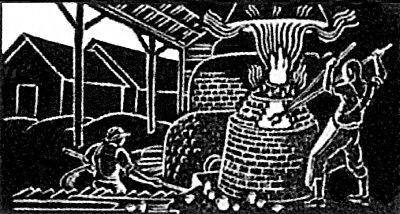This article is written around a brochure issued by the Leach Pottery back in 1928, I start with some background information.
By 1928 the Leach Pottery had been in operation in St. Ives for 8 years. These were difficult times, following the death of local benefactor Frances Horne the St. Ives Handicraft Guild had been closed and with it went the chance of more funding for the pottery. Although Leach still exhibited in London, his sales in Japan dried up when the Tokyo was flattened in an earthquake which killed over two million people.
At the pottery, Leach lost his experienced co-workers - Michael Cardew had left in 1926 to establish Winchcombe Pottery and Norah Braden moved on to work with Katharine Pleydell-Bouverie in Coleshill. The pottery was running at a loss so Leach had to diversify. As well as producing mainly stoneware pottery, he invited the public to take part in raku firing events and started producing tiles which he decorated with a range of designs.
Leach managed to soldier on and in May 1929 the return of Hamada inspired Leach on to focus on slipware.
Although 1928 wasn't memorable for pottery in St. Ives, it was the year that the artists Ben Nicholson and Christoper Wood first came to St. Ives and discovered the primitive painter Alfred Wallis but that is another story.

Woodcut print showing a Raku kiln being fired with the three chambed climbing kiln behind, scanned from John Edgeler's excellent Slipware and St. Ives book.
Here I have reproduced the information shown in the 1928 brochure.


